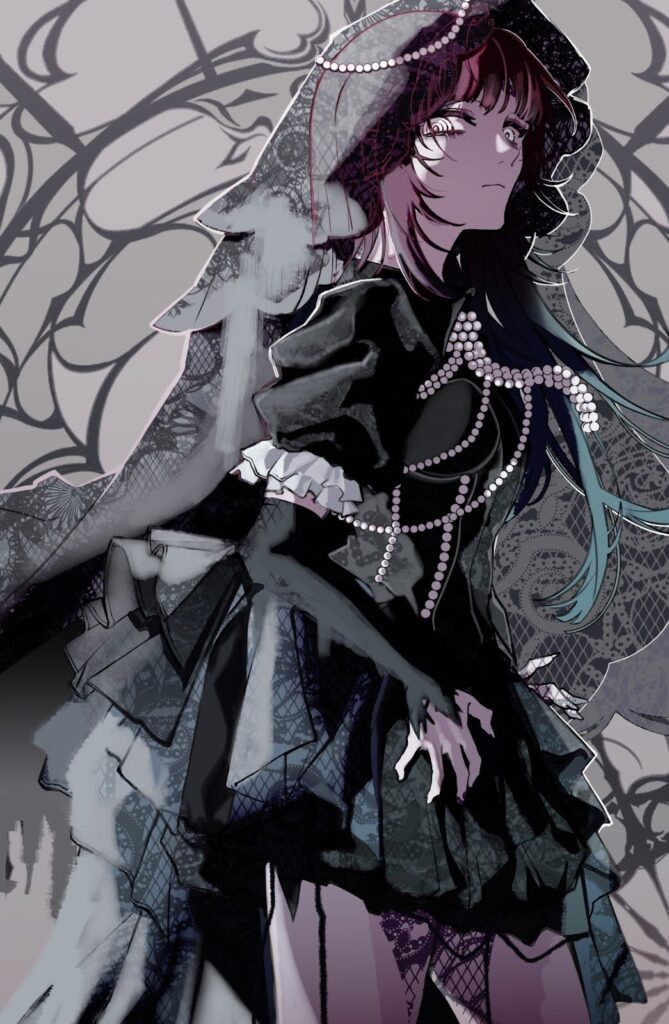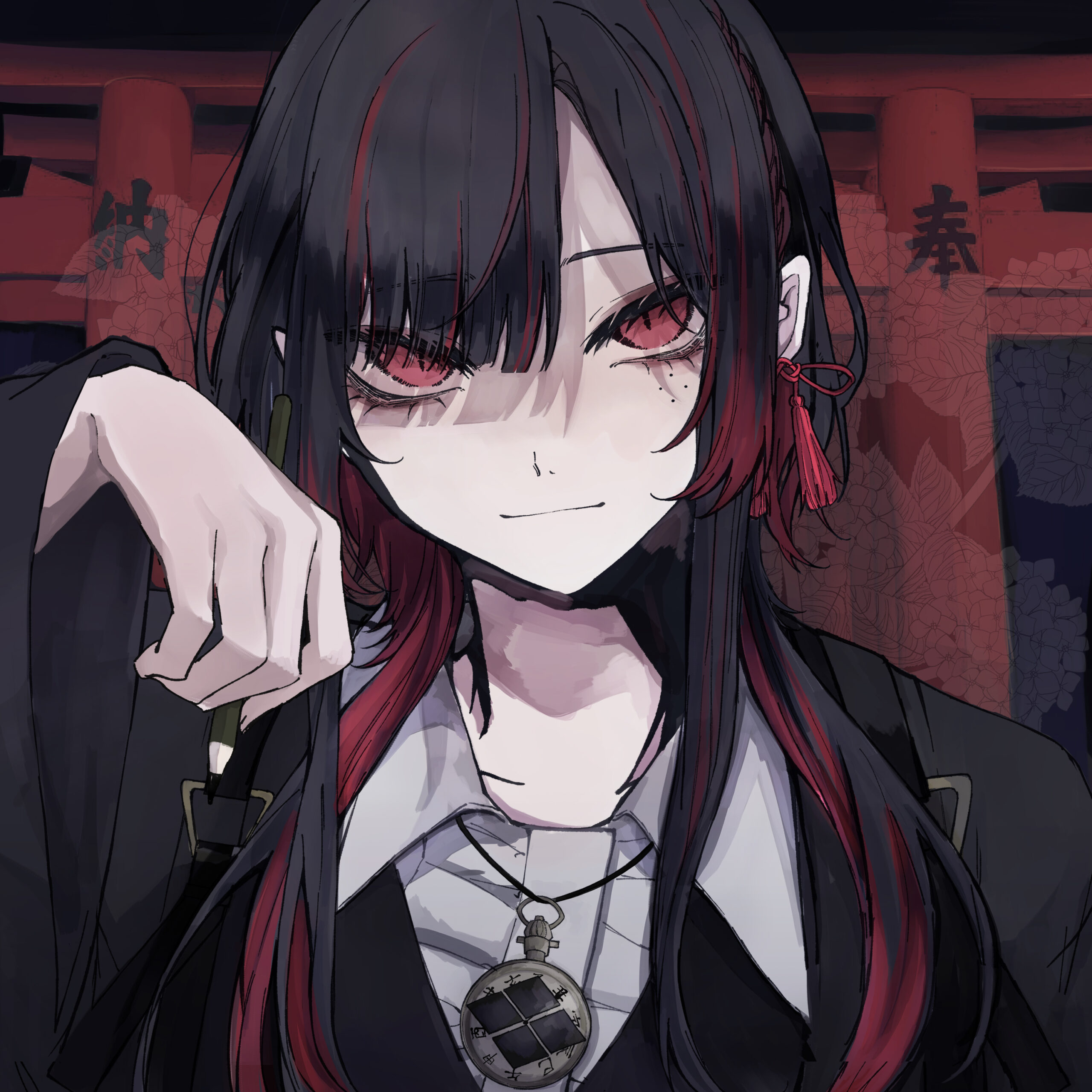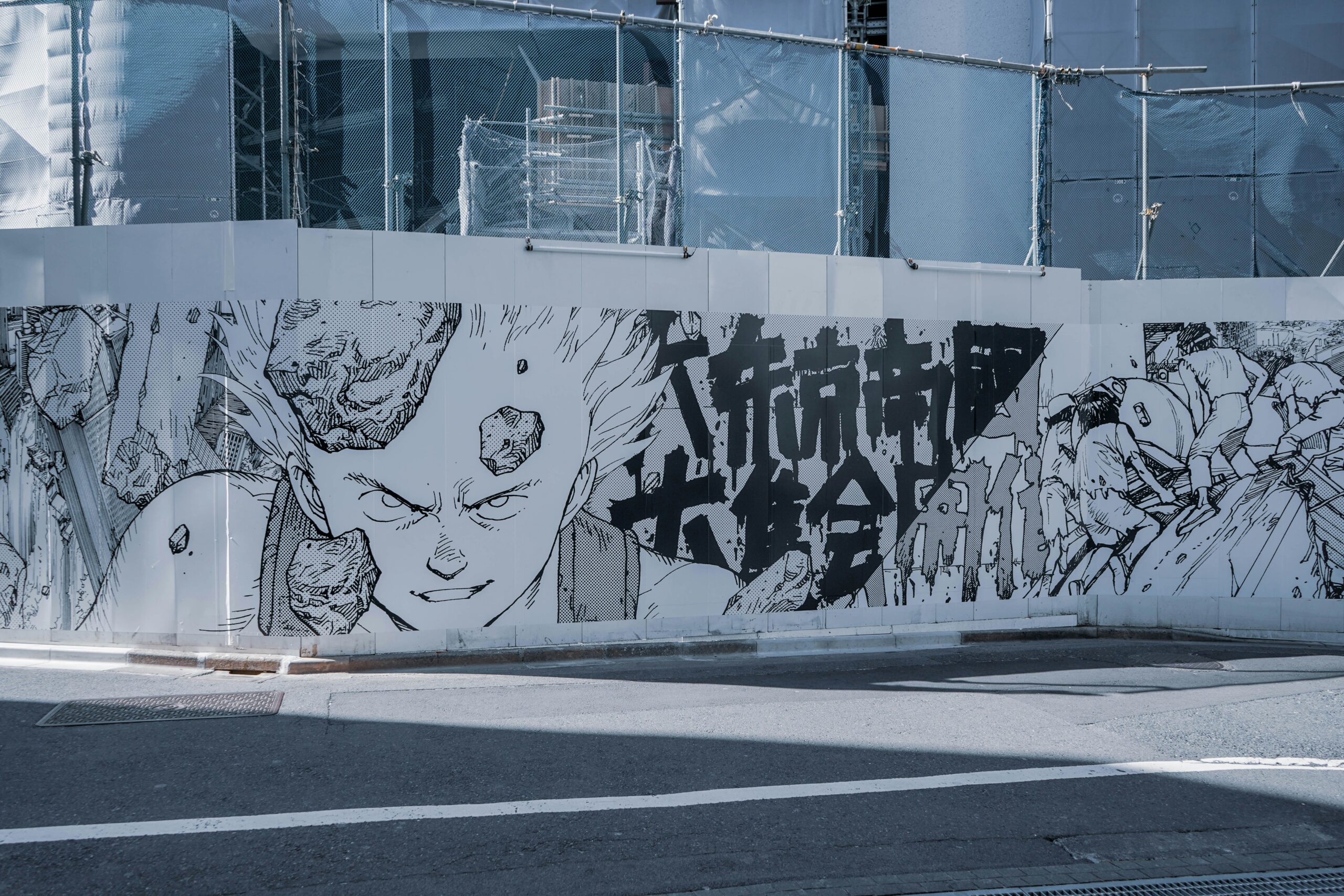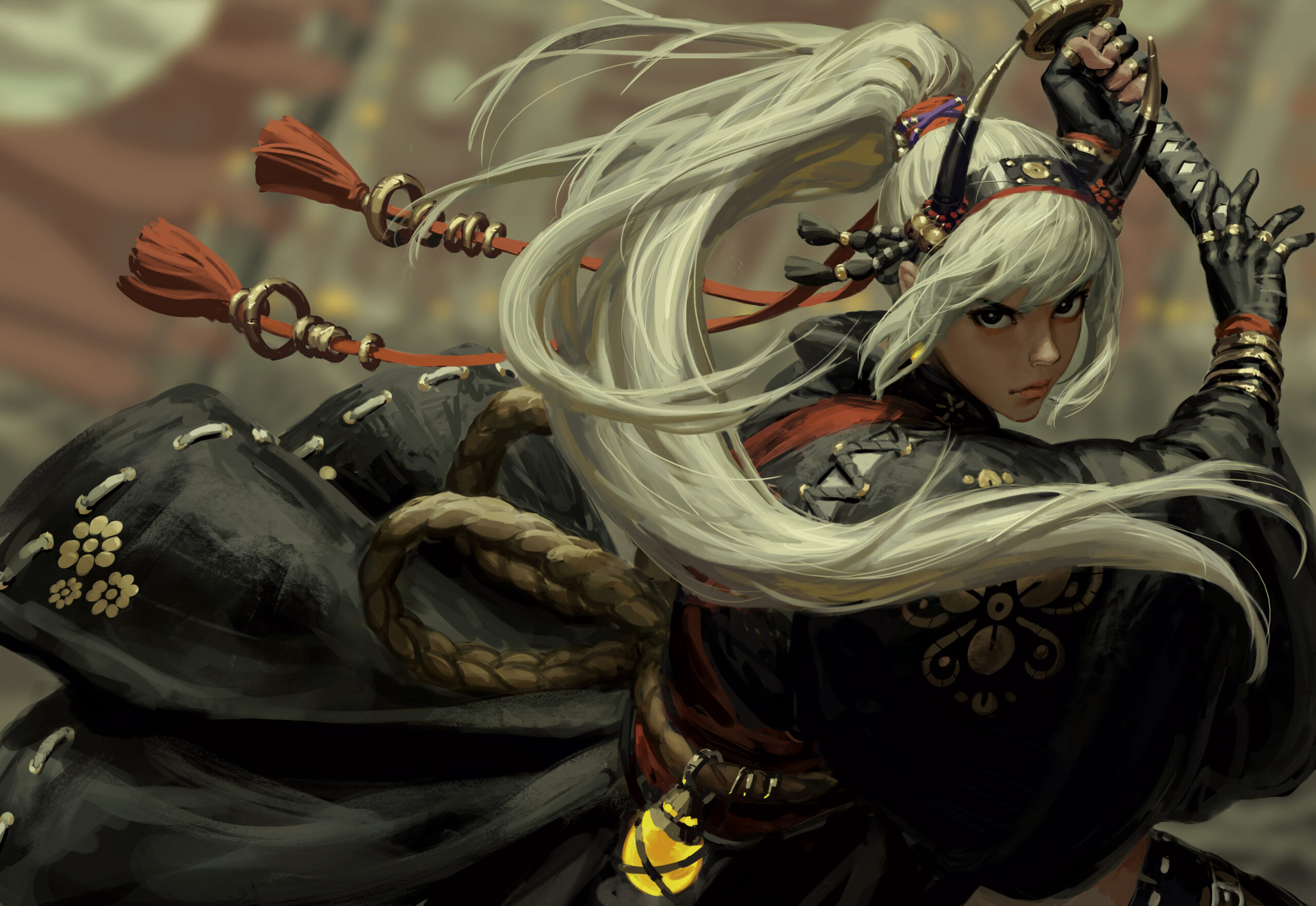The fragility beneath the strength, faces and expressions that speak in silences. Veiled beneath is the toxic haze that shrouds it all – is it sorrow, or a calm, unspoken surrender that we see. With a hand as delicate as breath, ORIHARA weaves images that seem to murmur to the soul. Where one might expect subtle nuances to quietly build the whole, her work turns that instinct on its head – the initial impression dissolves, undone by the whispering complexity of every minute detail.
Human beings are impossibly complex. In seeking to portray a single soul through the medium of illustration, ORIHARA approaches her subject with unwavering sincerity. Her ability and style to let opposing forces coexist effortlessly, without contradiction feels not only natural but eerily precise, and rendering her work all the more haunting.
In addition to being known as the image director for Ado, she is poised to present her inaugural solo exhibition at the upcoming OSAKA INTERNATIONAL ART 2025. An artist who transcends conventional roles, from illustrator to image director, her creative identity resists traditional categorization. In this two-part interview, we explore the depth of her artistic philosophy and the spirit that drives her.
It Started with Fanworks
B – To start, could you tell us what first inspired you to begin drawing.
ORIHARA – I’ve always loved manga and anime. I was especially drawn to stories in general and I often found myself imagining what would happen if a certain character existed within those stories.
Taking Harry Potter for example, there are four houses right? I’d imagine what kind of students might have been there a hundred years ago.. That kind of imagination led me to create characters in my head, and I started illustrating them in a way that I could visualize them myself. In a way, I’d say it all started with a love for fan creations and transforming it into my way of creative expressions.
B – So it wasn’t just enjoying the stories as they were, but expanding them into your imaginations.
ORIHARA – Yes exactly. I’ve always been drawn to reading and imagining the spaces between the lines. My friends and I used to create our own stories, and it evolved into creating my original narratives over time. It gradually shifted towards writing, and I’d draw illustrations to share those stories with others to supplement the visuals.

B – Do you think you tend to imagine or think about stuff a lot outside of manga and anime?
ORIHARA – Yes. I think so. I’ve always been someone who keeps all kinds of words and thoughts in my mind. One of my mentors once told me “Always keep your antenna up” and that advice really stuck with me. I don’t believe people who achieve extraordinary things were necessarily born special from the start. It’s more about noticing what others overlook, while they’re playing, resting or distracted, thinking beyond and more for random subjects and pushing themselves a bit further – those are the ones who really grow. And this sounds entirely logical to me.
So I often find myself thinking things like “The clouds today are really gray – why is that? Aren’t clouds supposed to be white?” or “Why does the sunset shift from orange to pink and then suddenly give way to this sharp line of blue?” or even “Why do dogs walk on four legs?”. I think the more time you spend questioning the obvious that are accepted as social norms and taken for granted, the more likely you can go steps ahead of the crowd.
B – I see. That makes me think how thoughtless I am… haha
ORIHARA – I’m an overthinker – I sometimes check if I locked the door properly five times before leaving. People around me often tell me I’m just overthinking.
B – That’s better than having the habit of forgetting to lock the door hahaha
ORIHARA – Better than having someone break in for sure haha
B – The way you immerse yourself so deeply into a single moment of life is very interesting.
ORIHARA – Thank you for saying that. Now even the door I locked five times can be relieved.
B – Yeah.. haha Do you think that kind of everyday awareness and your eye for observation and insight finds its way into your illustrations?
ORIHARA – Absolutely – it influences both my illustration work and my role as an image director. Thinking about human behavior in depth everyday: why a person chooses certain words in a given moment, why someone cried under certain circumstances. Such constant reflection has definitely shaped my creative process and career as an artist. In many ways, I think it’s become a core part of what grounds my work.

“continually wishing for someone’s happiness”
B – I don’t think “Image Director” existed before you.
ORIHARA – Yes, that’s right. I sometimes receive DMs from people who aspire to be an image director one day.
B – You basically created a new profession. May I please ask you to share what an image director does?
ORIHARA – From a technical standpoint, my role as an image director involves visually representing someone. Through illustration and various mediums like merchandise and costumes, I convey who they are, what kind of character they embody. I could be seen as a designer, forming and translating identity into visual expression.
To say it in an emotional way, it’s a job rooted in continually wishing for someone’s happiness.
B – That means, you really need to immerse yourself deeply into the person you’re portraying.
ORIHARA – Yes, that’s true.
B – I imagine there’s a real challenge in making sure you don’t misinterpret or misunderstand what and how you’re portraying.. Do you ever struggle with that?
ORIHARA – Yes, I always think about that. I can ever just say “leave it all to me, I know exactly how it is”, nor should it be. I believe people’s sensibilities can shift with something as simple as a single film. There’re so many moments and encounters in life that would make someone say “That changed my life”. If someone’s entire worldview can be changed in just two hours, how could I ever claim to fully understand a person baked on information I just gathered a month ago? I’m always mindful never to think I understand something or someone completely. Whenever I finish and submit my work, it’s always with a bit of hesitation and nervousness.
B – That also resonates with the mindset you value – “continually wishing someone’s happiness” you mentioned earlier. That word continually, the act of staying with it, of continuing to face someone with care – that seems incredibly important.
ORIHARA – Yeah, I can’t agree more.
B – In a way, it’s almost like you’re shouldering half of that person’s life – there’s a sense of responsibility that comes with it.
ORIHARA – I constantly worry that a certain depiction might lead to misconception – that even if a particular expression looks good visually and aesthetically, it could lead people to form the wrong impression of who that person is or give an idea that this person is somehow frozen in time and never evolving if I’m stuck with certain expressions. To avoid that kind of disconnect, I constantly ask myself if I’m misunderstanding something or if I’m just assuming that I understand. I feel like this kind of self-questioning isn’t just important but it’s essential for this job and the responsibility that comes with it.
Forging ahead on the still-uncharted path of “Image Director” – ORIHARA continues to break new ground. In Part I, she described her role as one with “continually wishing for someone’s happiness”, sharing a creative philosophy rooted in empathy, even at the cost of wearing herself down in the process. In Part II, we will explore how she manages herself within such an everyday-environment, tracing the evolution of her work shaped by constant self-questioning and breakin the walls.
OIA TICKET GIVEAWAY CAMPAIGN NOW LIVE!
Ready to experience the world of ORIHARA “in real life”? Now’s your chance! We’re giving away tickets to OSAKA INTERNATIONAL ART 2025 (May 31 – June 1)! Follow us on SNS and fill out the application form – it’s that easy!
*Limited to 2 tickets per person
【Application Form】
https://forms.gle/pkqXsabFTGctg1Rr7
BAM Official Account







